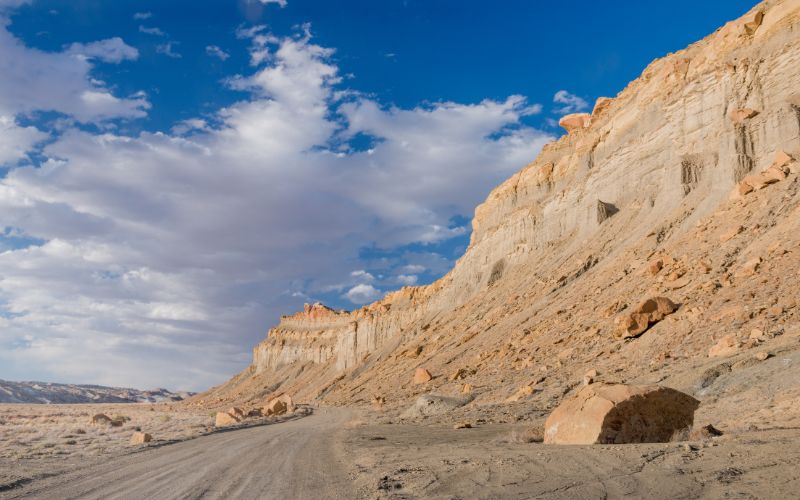Trail Running 101 : Super Tips for Beginners and Gear Essentials 2023
Trail running 101 is not just a sport; it’s an exhilarating journey that takes you through nature’s finest landscapes. If you’re new to the world of trail running, this comprehensive guide will equip you with the knowledge and gear essentials to embark on your adventure with confidence.
Trail running 101 offers a unique blend of physical challenge and natural beauty. It takes you off the beaten path, immersing you in serene forests, rugged mountains, and winding trails that offer a refreshing escape from the hustle and bustle of daily life. But before you hit the trails, there are key considerations to keep in mind.

Table of Contents
Trail Running vs. Road Running – Trail running 101
Trail running and road running are both forms of distance running, but they differ significantly in terms of terrain, challenges, and experiences. Understanding these differences is essential for anyone considering venturing off the pavement onto the trails.
Terrain – Trail running 101
Road Running: Road running takes place on paved surfaces, such as streets, sidewalks, and asphalt paths. The terrain is typically smooth and predictable, offering a consistent surface for running.
Trail Running: Trail running, on the other hand, unfolds on natural, often rugged terrain. Trails can vary from dirt paths through forests to rocky mountain trails. The uneven surfaces, roots, rocks, and elevation changes introduce an element of unpredictability.

Physical Demands – Trail running 101
Road Running: Road running tends to be more predictable in terms of footing and terrain. It allows for a steady, rhythmic stride, making it easier to maintain a consistent pace. However, the repetitive motion on hard surfaces can put stress on the joints, particularly the knees.
Trail Running: Trail running is physically demanding due to the ever-changing terrain. It requires quick adjustments in stride and pace, engaging a broader range of muscles. The uneven ground can enhance balance and stability but also presents challenges, especially during descents.
Mental Engagement – Trail running 101
Road Running: Road running often involves long stretches of pavement, which can become monotonous. Mental engagement may come from music, podcasts, or zoning out. However, road runners can miss out on the sensory experience of nature.
Trail Running: Trail running immerses you in the natural environment, offering constant mental stimulation. You must stay alert to navigate the changing terrain, spot trail markers, and avoid obstacles. The sights, sounds, and smells of the outdoors create a deeper connection with nature.
Equipment – Trail running 101
Road Running: Road running requires specific shoes designed for pavement. These shoes prioritize cushioning and support for repetitive motion on hard surfaces. The gear is generally lighter and less rugged.
Trail Running: Trail running demands specialized trail running shoes with durable outsoles for better traction and protection against rocks and roots. Gear may include hydration packs, headlamps, and navigational tools for remote trails.

Scenery and Experience – Trail running 101
Road Running: Road runners enjoy urban or suburban landscapes, cityscapes, and the convenience of local parks. It’s a great way to explore urban environments and maintain a consistent training routine.
Trail Running: Trail runners are rewarded with breathtaking natural beauty. Running through forests, along ridgelines, or by mountain lakes provides a profound connection to the outdoors. Each trail offers a unique adventure.
Challenges and Rewards – Trail running 101
Road Running: Road running excels in predictability and accessibility. It’s great for tracking speed and performance, making it a favorite for races like marathons and half-marathons.
Trail Running: Trail running offers a sense of exploration and adventure. The challenging terrain, fresh air, and immersion in nature provide mental and physical rewards beyond traditional road running.
In summary, trail running and road running each have their unique appeal. Road running is predictable, accessible, and excellent for tracking performance. Trail running, on the other hand, offers a sensory experience, physical challenges, and a deep connection to nature. Ultimately, the choice between them comes down to your preferences, goals, and the kind of experience you seek as a runner. Many runners enjoy a mix of both to keep their training diverse and exciting.
Getting Started with Trail Running – Trail running 101
Trail running is a rewarding and invigorating way to connect with nature while staying fit. However, if you’re new to this sport, it’s essential to start on the right foot and gradually build your skills and confidence. Here’s a more in-depth look at how to get started with trail running:
Choosing the Right Trails – Trail running 101
Selecting suitable trails is the foundation of a successful trail running journey. Consider the following factors when choosing your trails:
1. Distance: Start with shorter trails, usually 3-5 miles or less, to build endurance and confidence. As you progress, gradually increase the distance.
2. Terrain: Begin with well-maintained, less technical trails that are flat or gently rolling. Save rugged or steep trails for when you’re more experienced.

3. Accessibility: Opt for trails that are easily accessible and not too remote, especially when you’re just starting. Well-traveled trails can offer a sense of security.
4. Elevation Gain: Pay attention to the elevation gain, which can significantly impact the difficulty of a trail. Beginners may prefer trails with minimal elevation changes.
5. Trail Markings: Choose trails with clear markings or signage, especially if you’re new to a particular area. This helps prevent getting lost.
Start Gradually – Trail running 101
Trail running can be physically demanding due to the uneven terrain and elevation changes. Here’s how to ease into it:
1. Short Distances: Begin with short trail runs, even if you’re an experienced road runner. This allows your body to adapt to the different demands of trail running.
2. Slow Pace: Initially, focus on maintaining a comfortable, conversational pace. Don’t worry about speed; focus on enjoying the experience.
3. Rest and Recovery: Give your body ample time to recover between trail runs, especially if you’re feeling sore or fatigued.
4. Build Confidence: Gradually introduce more challenging trails as your confidence and fitness improve.
Proper Trail Running Form – Trail running 101
Maintaining the right form is crucial for a successful and injury-free trail running experience:
1. Upright Posture: Keep your posture upright, looking ahead rather than down at your feet. This helps you anticipate obstacles.
2. Use Your Arms: Your arms play a significant role in maintaining balance and stability on uneven terrain. Swing them naturally to help with balance.
3. Shorter Strides: Take shorter, quicker strides to adapt to changes in terrain. This minimizes the risk of tripping or slipping.
4. Core Engagement: Engage your core muscles to help stabilize your torso, especially during steep ascents and descents.
Safety First – Trail running 101
Safety should always be a priority when trail running. Here’s how to ensure your safety on the trails:
1. Inform Someone: Let a friend or family member know your trail running plans, including your intended route and estimated return time.
2. Carry Essentials: Depending on the trail’s remoteness, bring essentials such as a map or GPS device, extra water, energy snacks, a basic first aid kit, and a headlamp if you plan to run during low-light conditions.
3. Weather Awareness: Be aware of weather conditions and forecasts. Dress appropriately and avoid running in severe weather.
4. Trail Etiquette: Follow trail etiquette by yielding to other trail users, staying on marked paths, and respecting wildlife and vegetation.
Trail running can be a fulfilling and transformative experience. By choosing the right trails, starting gradually, maintaining proper form, and prioritizing safety, you’ll be well on your way to enjoying the beauty and challenges of the trails. As you gain experience and confidence, you’ll discover the incredible rewards that trail running has to offer.
Essential Trail Running Gear – Trail running 101
Trail running requires specialized gear to ensure your comfort, safety, and performance on rugged terrain. Here’s a detailed look at the essential gear you should consider:
Trail Running Shoes – Trail running 101
Why They Matter: Trail running shoes are specifically designed to tackle uneven, rugged terrain. They provide better traction, durability, and protection compared to regular running shoes.
Features to Look For:
- Tread: Opt for shoes with aggressive, multidirectional lugs on the outsole. This enhances grip on varied surfaces.
- Protection: Look for rock plates or protective layers in the sole to shield your feet from sharp rocks and roots.
- Fit: Ensure a snug fit to prevent blisters and provide stability on uneven ground.
- Breathability: Consider shoes with breathable uppers to keep your feet comfortable during long runs.
Moisture-Wicking Clothing – Trail running 101
Why It Matters: Trail running can be physically demanding and lead to sweating. Moisture-wicking clothing helps keep sweat away from your body, preventing chafing and discomfort.
Features to Look For:
- Material: Choose clothing made from technical fabrics like polyester or merino wool. These materials wick moisture away from your skin.
- Layering: Opt for moisture-wicking base layers and lightweight, breathable outer layers for adaptability to changing weather conditions.
Hydration Pack or Belt – Trail running 101
Why It Matters: Staying hydrated during a trail run is crucial. Hydration packs or belts allow you to carry water and other essentials hands-free.
Features to Look For:
- Capacity: Choose a pack or belt with an appropriate capacity based on your run’s duration and needs.
- Comfort: Look for adjustable straps and breathable materials to ensure comfort during your run.
- Pockets: Additional pockets can store snacks, keys, and other essentials.
Navigational Tools – Trail running 101
Why They Matter: Trail running often takes you into remote areas where navigation can be challenging. Navigational tools are essential for staying on course.
Tools to Consider:
- Maps: Carry trail maps or topographic maps of the area you’re running in.
- Compass: A compass is a valuable tool for orienting yourself and finding your way if you become disoriented.
- GPS Device: GPS devices or running watches with GPS can provide real-time location tracking and help you follow your planned route.
Trail Running Poles – Trail running 101
Why They Matter: Trail running poles can provide stability and reduce the impact on your knees, especially on steep ascents and descents.
Features to Look For:
- Adjustability: Choose poles with adjustable length to suit varying terrains and your height.
- Lightweight: Look for lightweight materials like carbon fiber for easy portability.
Headlamp – Trail running 101
Why It Matters: If you plan to run during low-light conditions or in the early morning or evening, a reliable headlamp is crucial for visibility.
Features to Look For:
- Brightness: Choose a headlamp with adjustable brightness settings to conserve battery life when needed.
- Battery Life: Consider headlamps with long battery life for extended runs.
Safety Essentials – Trail running 101
Why They Matter: Safety should always be a priority when trail running, especially in remote areas.
Items to Carry:
- Basic First Aid Kit: Include essentials like bandages, antiseptic wipes, and blister treatment.
- Emergency Whistle: This can be invaluable for attracting attention if needed.
- Fully Charged Phone: Ensure your phone is charged and carries emergency contact information.
Trail Running Gaiters – Trail running 101
Why They Matter: Gaiters cover the top of your shoes and lower legs, preventing debris like rocks, dirt, and sticks from entering your shoes.
Features to Look For:
- Durable Material: Choose gaiters made of durable and breathable materials.
- Secure Attachment: Look for gaiters that securely attach to your shoes to stay in place during runs.
Nutrition and Hydration – Trail running 101
Why They Matter: Carry energy gels, bars, or snacks to fuel your run, especially on longer outings.
Tips:
- Plan Your Nutrition: Calculate your nutritional needs based on the duration and intensity of your run.
- Hydration Strategy: Develop a hydration strategy that matches the conditions and duration of your run.
Trail running gear can greatly enhance your comfort and safety while exploring the great outdoors. Investing in the right equipment ensures you’re prepared for the challenges and rewards of trail running. As you gain experience, you can fine-tune your gear choices to match your unique preferences and running style.
Conclusion – Trail Running 101
Trail running is not just a sport; it’s a journey of discovery, self-challenge, and connection with nature. As you lace up your trail running shoes and venture onto the winding paths less traveled, remember that every step brings you closer to a deeper understanding of yourself and the great outdoors.
The Beauty of the Trail – Trail running 101
Trail running transports you into a world of natural wonder, where the beauty of the trail becomes a captivating muse. Each trail, whether nestled in the heart of a lush forest, tracing the contours of rugged mountains, or winding along the coastline, offers a unique canvas painted with nature’s finest strokes.
Diverse Landscapes – Trail running 101
One of the most remarkable aspects of trail running is the diversity of landscapes you encounter. Each trail unveils a new chapter of nature’s story:
- Enchanted Forests: Run through dense forests where sunlight filters through the canopy, creating dappled patterns on the forest floor. The whispering leaves and ancient trees evoke a sense of wonder.
- Mountain Majesty: Ascend mountain trails that lead to awe-inspiring vistas. The challenge of the climb is rewarded with sweeping panoramas of rugged peaks, valleys, and distant horizons.
- Coastal Serenity: Explore coastal trails where the rhythmic crash of waves provides a soothing backdrop. Seabirds glide overhead, and the salt-tinged air invigorates your senses.
- Desert Solitude: Traverse desert trails that reveal the stark beauty of arid landscapes. The rust-colored earth, towering rock formations, and vast expanses offer a unique kind of solitude and introspection.
Wildlife Encounters – Trail running 101
The trails are a stage for captivating wildlife encounters. Keep a watchful eye, and you may spot a deer gracefully leaping through the underbrush, a fox darting into the shadows, or a hawk soaring overhead. These encounters remind us that we share the trail with a thriving ecosystem, each creature playing a role in the delicate balance of nature.
Changing Seasons – Trail running 101
The beauty of the trail shifts with the seasons. Spring brings a burst of wildflowers, filling the meadows with vibrant colors. Summer bathes the trails in warm sunlight, inviting you to dip your feet in clear mountain streams. Autumn paints the landscape in fiery hues as leaves turn to gold and crimson. Winter offers a pristine canvas of snow, transforming familiar trails into a magical winter wonderland.
A Connection to Nature – Trail running 101
Trail running fosters a profound connection to nature. As you navigate the twists and turns of the trail, you become attuned to the subtle rhythms of the environment—the rustling leaves, the babbling brooks, the scent of pine in the air. It’s a sensory experience that heightens your awareness and deepens your appreciation for the world around you.
Physical and Mental Challenge – Trail running 101
Trail running challenges you in ways that road running cannot. The uneven terrain, steep ascents, and technical descents demand physical agility and mental fortitude. You’ll discover strength you didn’t know you had and learn to adapt to the ever-changing landscape.
Safety and Preparation – Trail running 101
While the trails offer boundless adventure, they also require respect and preparation. Safety should always be a priority. Inform someone of your plans, carry essential gear, and stay mindful of weather conditions. Being prepared allows you to enjoy the trails with confidence.
A Community of Trail Runners – Trail running 101
Trail running is more than a solo pursuit; it’s a community. Connect with fellow trail runners, join local running groups, and share your experiences. The camaraderie of the trail running community is a source of inspiration, motivation, and friendship.
Embrace the Adventure – Trail running 101
In conclusion, trail running is an invitation to embrace the adventure that awaits just beyond your doorstep. Whether you’re a beginner taking your first steps on a forest trail or a seasoned trail runner tackling challenging peaks, the trails offer an endless array of experiences. Each run is a chance to explore, to grow, and to find solace in the natural world.
So, as you embark on your trail running journey, remember to tread lightly, respect the environment, and savor every moment. Whether you seek serenity, exhilaration, or a deeper connection to nature, the trails are there, ready to welcome you. Lace up, venture forth, and let the adventure begin. Happy trail running!









